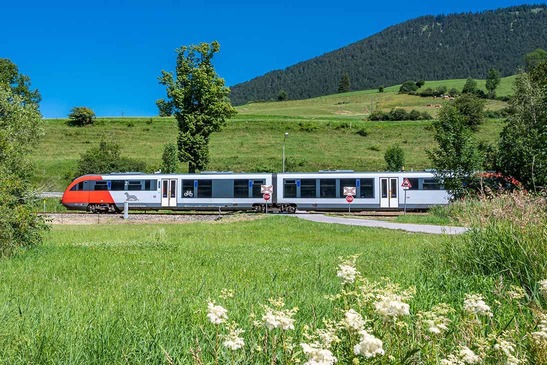
Attractive Regional Railways
Half of Austria's population lives outside urban areas. Good rail connections make regions attractive as residential and business locations. Key to success are a modern image, up-to-date vehicles and stations, as well as a well-designed timetable. For even greater sustainability, the electrification of regional railways is being accelerated. In addition, investments are being made in modern stations and stops, as well as in accessibility, noise protection, and park-and-ride facilities.
Modernisation of Operations Management
A significant contribution to the economic operation and cost reduction is made by the modernisation of operations management. The innovation programme for regional railway technology links developments in the fields of signalling technology and telematics. The goal is a uniform and cost-effective equipment standard for secondary lines. In addition to new standards for train protection systems and railway crossings, the focus is also on the cost-effectiveness of the equipment – from procurement to maintenance.
-
Transcript of the video
TRACK FWD - Renaissance of regional railroads
Film footage, animations, music in the background, text insertsWhen we talk about digitalization, we are also talking about a renaissance of regional railroads, the regional railroad 2.0, so to speak.
In the past, passenger numbers were often out of proportion to the necessary investments, but digitalization is now the game changer. Digital innovations, for example at railroad crossings, are making regional rail affordable. Fail-safe high-tech radio replaces expensive cables and excavations. Digital technology makes regional railroads fit for the future. And regional railroads strengthen the business location in the regions, create jobs and ensure a higher quality of life.
And most importantly: In the digital future, we will bring even more passengers and goods onto the rails.
And we are shaping it here and now.
Today. For tomorrow. For us.
Innovative technology
The core for the further development of regional railway equipment is ETCS Level 2 only, integrated into the Radio Block Centre (RBC) of the main lines. This enables operations without costly parallel equipment and without light signals. According to current analysis, the main line RBCs that are planned can be used for the regional railway lines without significant additional equipment requirements. As a result, substantial hardware costs can be avoided. Standardised interfaces of the European initiative EULYNX are envisaged for the control of signal boxes, and by 2028, significant synergies are expected through the use of new digital signal boxes on regional railways. In the field of control technology, similar to ETCS, the technologies of the main line (ARAMIS) will be applied. This will allow synergies in operation, maintenance, and technology to be optimally utilised. Innovations in the design of the driver’s cab signalling system will also be necessary for this.
Radio instead of cable
The reduction in longitudinal cabling is also cost-effective. Safety technology, trains and field elements should communicate wirelessly. Railway crossing safety systems are to be activated via ETCS. The power supply should also be self-sufficient wherever technically possible and economically viable.